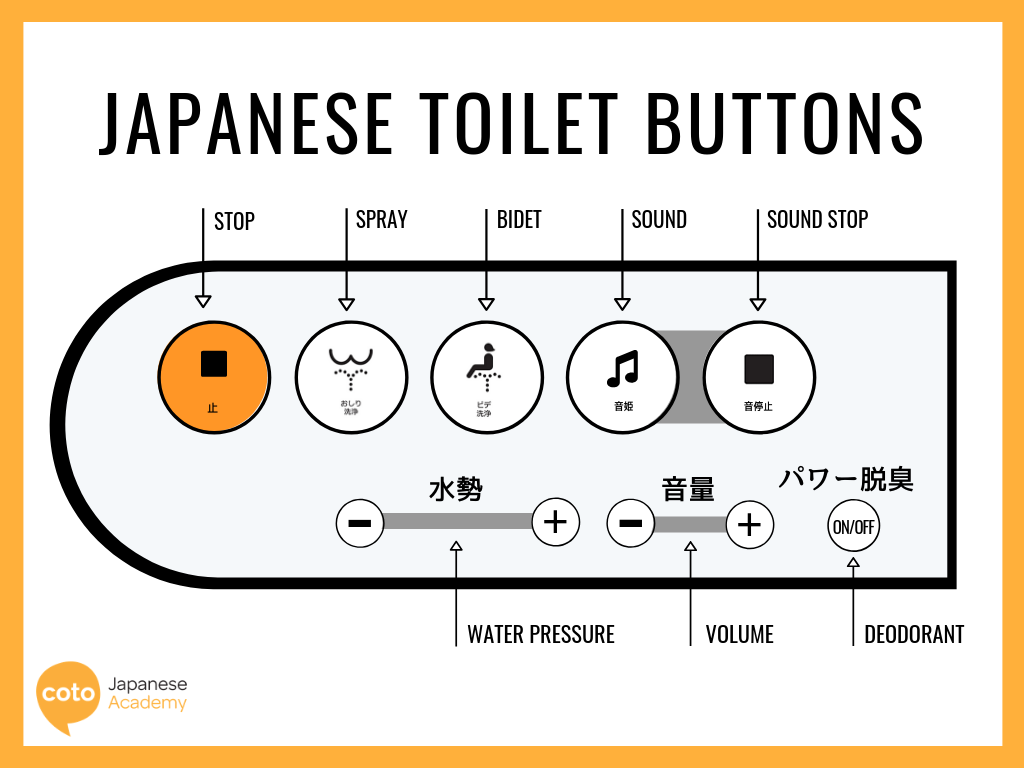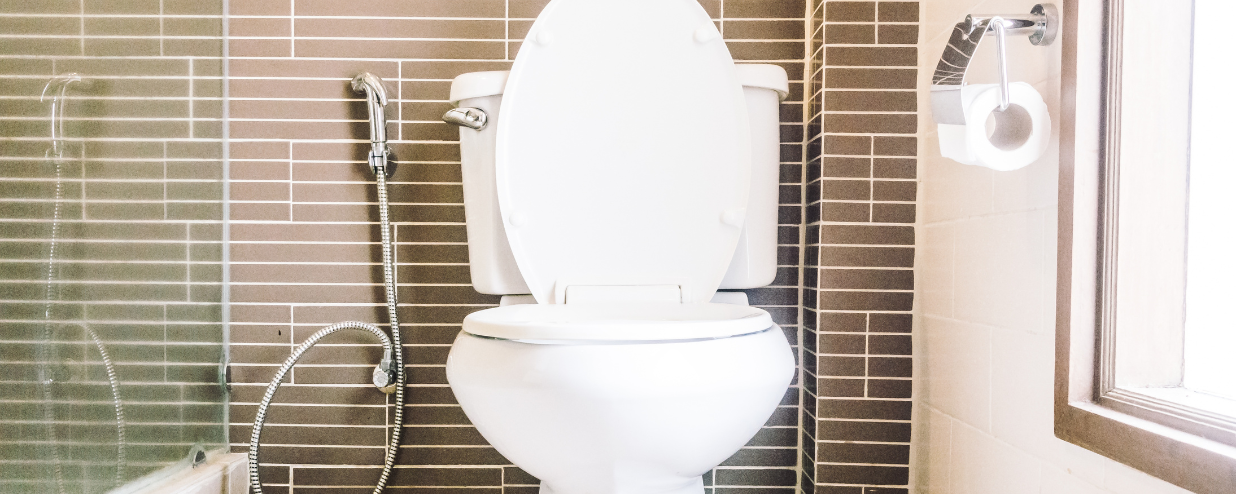Have you ever used a Japanese toilet? If not, you’re in for a treat! Bidets have been popular in Japan for decades, and they’re quickly gaining popularity all around the world. Going to the bathroom in Japan for the first time is often interesting as in the West, we do not usually have buttons on our toilets. With numerous buttons for you to guess and press, Japanese toilets could surprise you with their different functions.
These high-tech bathroom fixtures are designed to clean your private areas after using the toilet, and they come with a range of features that make them a must-have for anyone looking to upgrade their bathroom experience. But what makes Japanese bidets so special?
In this ultimate guide, we’ll take a deep dive into the world of Japanese bidets, exploring how they work, the benefits they offer, and why you need one in your life. We have combined the important kanjis you should know for each of the most popular toilet models in Japan. The next time you answer nature’s call, you wouldn’t be guessing the use of each button on a Japanese toilet!
How Japanese Bidets Work

A lot of toilets in other countries have been using bidets or sprays, but nothing’s quite like Japanese toilets. Of course, Japanese bidets have the usual spray that uses water for cleaning. They’re attached to existing toilets and come with a range of features that make them both hygienic and comfortable to use.
The most basic Japanese bidet will simply spray water onto your skin, but more advanced models will come with heated seats, air dryers, and even deodorizers. Some models even have built-in music players and LED lights to create a spa-like experience.
The water used by Japanese bidets is typically warm, which makes for a more comfortable experience. Some models even come with adjustable water temperature, pressure, and spray patterns so that you can customize the experience to your liking. Many Japanese bidets also use a self-cleaning mechanism to keep the nozzle clean between uses!
Overall, Japanese bidets are designed to provide a more thorough and hygienic cleaning experience than traditional toilet paper. They’re also more environmentally friendly since they reduce the amount of toilet paper used.
How Was the Japanese Bidet Discovered?
Bidets have been around for centuries, but the first electronic bidet was invented in Japan in the 1960s. These early models were simple and consisted of a basic spray system. However, as technology advanced, so did the bidet. In the 1980s, Japanese companies began adding more features to their bidets, such as heated seats and air dryers.
Today, Japanese bidets are some of the most advanced in the world. As of 2016, 81% of Japanese households use bidets, more commonly called washlets. Washlet is basically the brand name of Toto, the number one manufacturer of Japanese toilets. They come with a range of features that make them both hygienic and comfortable to use. Japanese bidet manufacturers are constantly improving their products, adding new features and technologies to make the bidet experience even better

How to Read Japanese Toilet Buttons

When you first see the washlet (ウォシュレット, Woshuretto) — the typical model of the Japanese electronic toilet — you’ll stumble upon the control pad with a lot of buttons on the side of the toilet. Sometimes, it can even be attached to the wall on your side.
Most of the labels of the buttons come in English, but you might still be confused with what each function does. Below, you’ll find what the functions of each button do!
| Buttons | Romaji | English | Function |
|---|---|---|---|
| 止 | tome | stop | used to stop the water spray from either the oshiri or bide |
| おしり | oshiri | rear | used to spray water for rear washing |
| ビデ | bide | bidet | used to spray water for front washing |
| 音/音姫 | oto/otohime | sound | Press this to turn on the water sound stimulator to make yourself more discrete |
| 音停止 | ototeishi | stop sound | Press this to stop the sound. |
| 水勢 | suisei | water pressure | This controls the water pressure for your spray. |
| 音量 | onryou | sound volume | This controls the volume when you have the sound stimulator on. |
| パワー脱臭 | pawaadasshu | deodorant | Deodorizer filters out all unpleasant smells. |
Keep in mind that the labels and buttons above are the most common ones you’ll find in a standard Japanese toilet. Still, here are some other cool functions and variations you’ll find in other models!
| Label | Romaji | English | Function |
|---|---|---|---|
| 乾燥 | Kansou | Dry | Use this to dry your rear or front after washing. |
| 入/切 | Iri/setsu | On/off | |
| 弱 | Yowai | Weak | Use to set the pressure of the water (weak) |
| 強 | Tsuyoi | Strong | Use to set the pressure of the water (strong) |
| 洗浄位置 | Senjou ichi | Nozzle position | Use this to adjust the nozzle position |
| 前 | Mae | Front | (For adjusting nozzle position) |
| 後 | Ato | Back | (For adjusting nozzle position) |
| 温度設定 | Ondo settei | temperature setting | This is used to set the temperature of the toilet seat |
| 便座 | Benza | Toilet seat | |
| 温水 | Onsui | Warm water | |
| 流す | Nagasu | Flush | Flush the toilet |
| 大 | Oo | Big | |
| 小 | Ko | Small |
How to Use Japanese Smart Toilets
Once you understand the functions of each button on a Japanese toilet, using it will be easy. Here are some important points to note:
1. Automatic Sensors
Many restrooms in Japan, especially those with newer toilets, have automatic sensors for various functions. For example, a sound simulator may activate when someone enters the cubicle, even without pressing any buttons. Be careful not to confuse it with the regular flush button, as the sound simulator is often attached to the wall. Additionally, some modern toilets automatically flush as soon as you get off the seat. Finally, don’t be surprised if the toilet cover automatically rises when you enter the cubicle as even newer models will have a motion sensor for that.
2. Emergency Call Button
Some toilets are equipped with an emergency call button, usually located next to the flush button. This button is intended for use by people with disabilities or in case of sudden illness while on the toilet. It is labeled as “yobidashi” and should only be used in emergencies. It is often colored in red or yellow, which can be misleading, as many people may mistake it for the flush button.
3. Locating the Flush Button
Depending on the toilet model, the flush button may be located on the side of the tank, replaced by a push button, a motion-control sensor, or integrated into the main control box mounted on the wall. Take care not to confuse it with the button for the water simulator sound or the emergency call button. Look for labels such as 流す, 大, or 小 to identify the flush button.
4. Flushing Toilet Paper
In Japan, it is customary to throw toilet paper directly into the toilet after use. However, it is important to ensure that you are using actual toilet paper and not paper towels or facial tissues, as these can cause clogs. Other items such as sanitary pads or wrappers should be disposed of in a small trashcan inside the cubicle.
By following these guidelines, you can confidently and effectively use a Japanese smart toilet.
Western vs Japanese Toilets
Japanese bidets are often compared to traditional Western toilets, which use toilet paper to clean the private areas after using the toilet. While both methods are effective at cleaning, bidets offer several advantages over traditional Western toilets.
Bidets provide a more thorough and hygienic cleaning experience than toilet paper. They use water to clean their private areas, which is more effective at removing bacteria and other harmful substances than dry toilet paper.
Bidets are also more environmentally friendly since they reduce the amount of toilet paper used. This is not only good for the environment but can also help save you money in the long run.
Finally, bidets are more comfortable to use than traditional Western toilets. They come with heated seats, which is especially beneficial during cold winter months. Some models even come with air dryers and deodorizers, which can make for a more pleasant bathroom experience.
It’s gotten to the point where even foreigners who have lived in Japan for a long time claim that they could never go back to using just toilet paper in their bathrooms!
Conclusion
Of course, no one is coming to Japan just to try the smart Japanese toilets, but it’s defnintely one of the unique things you can only experience here! These high-tech bathroom fixtures provide a more thorough and hygienic cleaning experience than traditional Western toilets, and they come with a range of features that make them both comfortable and easy to use.
And who knows, after trying them, you might be looking to upgrade your own bathroom experience.
Other Guide to Your Japanese Series
- Guide to you Japanese Washing Machines
- Guide to Your Japanese Rice Cookers
- Guide to Your Japanese Food Labels
- Guide to your Japanese Bathtubs
FAQ
Is Japanese bidets easy to use?
No, Japanese bidets are very easy to use. They come with intuitive controls that allow you to customize the experience to your liking.
What are the cost of Japanese bidets?
The cost of Japanese bidets can vary depending on the features and technology included. However, there are many affordable options available on the market.
What are Japanese bidets?
Japanese bidets use a minimal amount of water to clean your private areas. They’re actually more environmentally friendly than traditional Western toilets, which use a lot of toilet paper.
Are Japanese bidets designed for hygienic cleaning experiences?
Yes, Japanese bidets are designed to provide a hygienic cleaning experience. They use water to clean your private areas, which is more effective at removing bacteria and other harmful substances than dry toilet paper.
